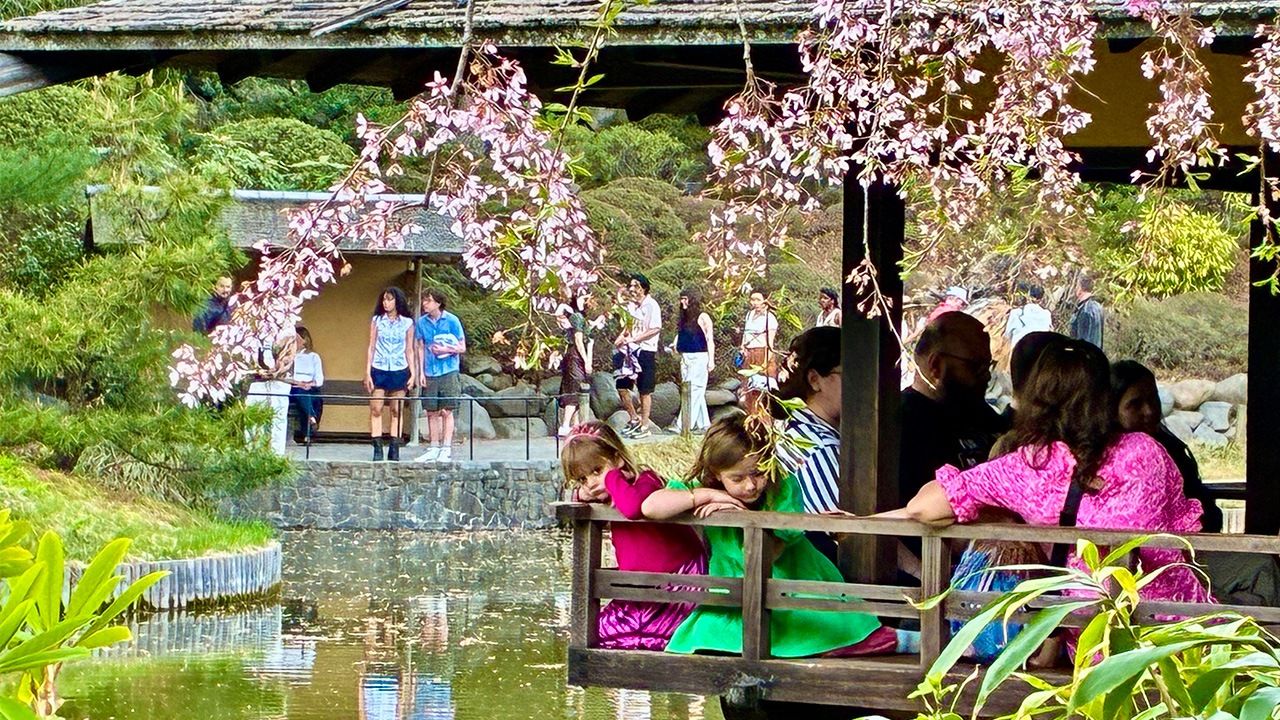New York is perhaps the world’s most international city, and the Japan Parade, held in May 2025, showed that Japan and its culture enjoy their place there as well. Some 60,000 people gathered to enjoy the Japanese cuisine, arts, and pop entertainment festivities.
Major Japan-Themed Parade Takes Over New York
On Saturday, May 10, the west side of Central Park in New York City came alive with the Japan Parade, a vibrant celebration of Japanese culture. The parade featured 110 groups and roughly 2,800 participants, including a delegation from the city of Toyama, recently named a “must-visit” place to go by the New York Times. The delegation performed the city’s signature Owara Kaze no Bon street dance, captivating spectators who watched with curiosity and reverence. Their expressions reflected a clear sense of respect for a culture both foreign and fascinating.
Toyama’s Owara Kaze no Bon float during the parade. (© Kasumi Abe)
The atmosphere intensified when special guests appeared: Yamamoto Sayaka, a former member of the idol group NMB48, and cast members from the stage musical adaptation of the hit anime Attack on Titan. Cheers erupted from the crowd. The musical, which made its international debut in New York with a four-show run on Broadway in October 2024, had sold out completely—an overwhelming success. Fans from both Japan and the United States lined the streets hoping to catch a glimpse of the cast.
The enthusiastic applause from spectators throughout the route spoke volumes about the growing popularity of Japanese culture in the city. Now in its fourth year, the Japan Parade continues to expand. According to organizers, this year’s event was the largest yet.
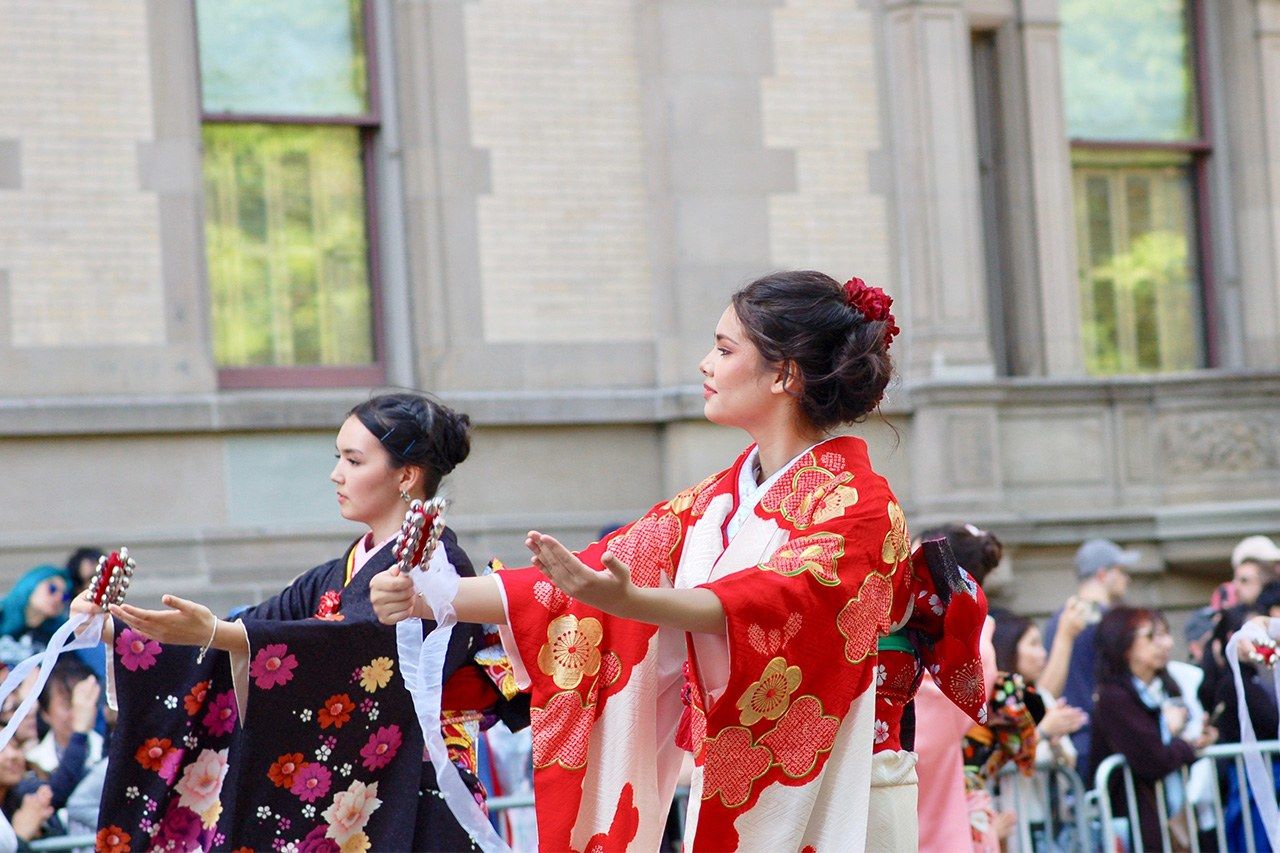
A procession of groups showcasing traditional Japanese culture, including dances, kimono, martial arts, and taiko drumming. (© Kasumi Abe)
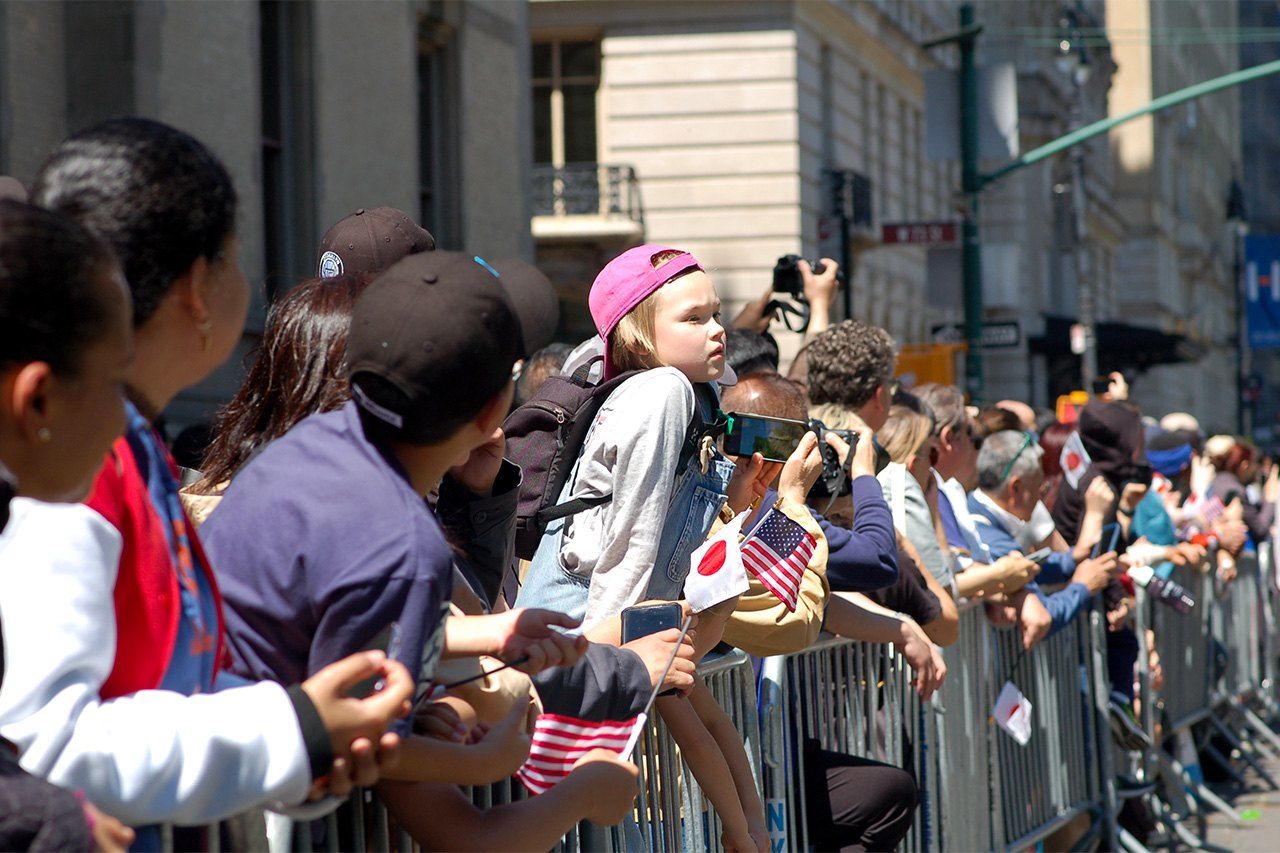
According to the NYPD, the event drew over 60,000 attendees. (© Kasumi Abe)
Attack on Titan wasn’t the only anime-inspired stage production making waves in New York recently. Pretty Guardian Sailor Moon also drew major attention. The live show toured 21 cities across North America starting in March, wrapping up its final performance in New York at the end of April. Broadway welcomed throngs of manga and anime fans, who came to enjoy this beloved magical girl classic in theatrical form.
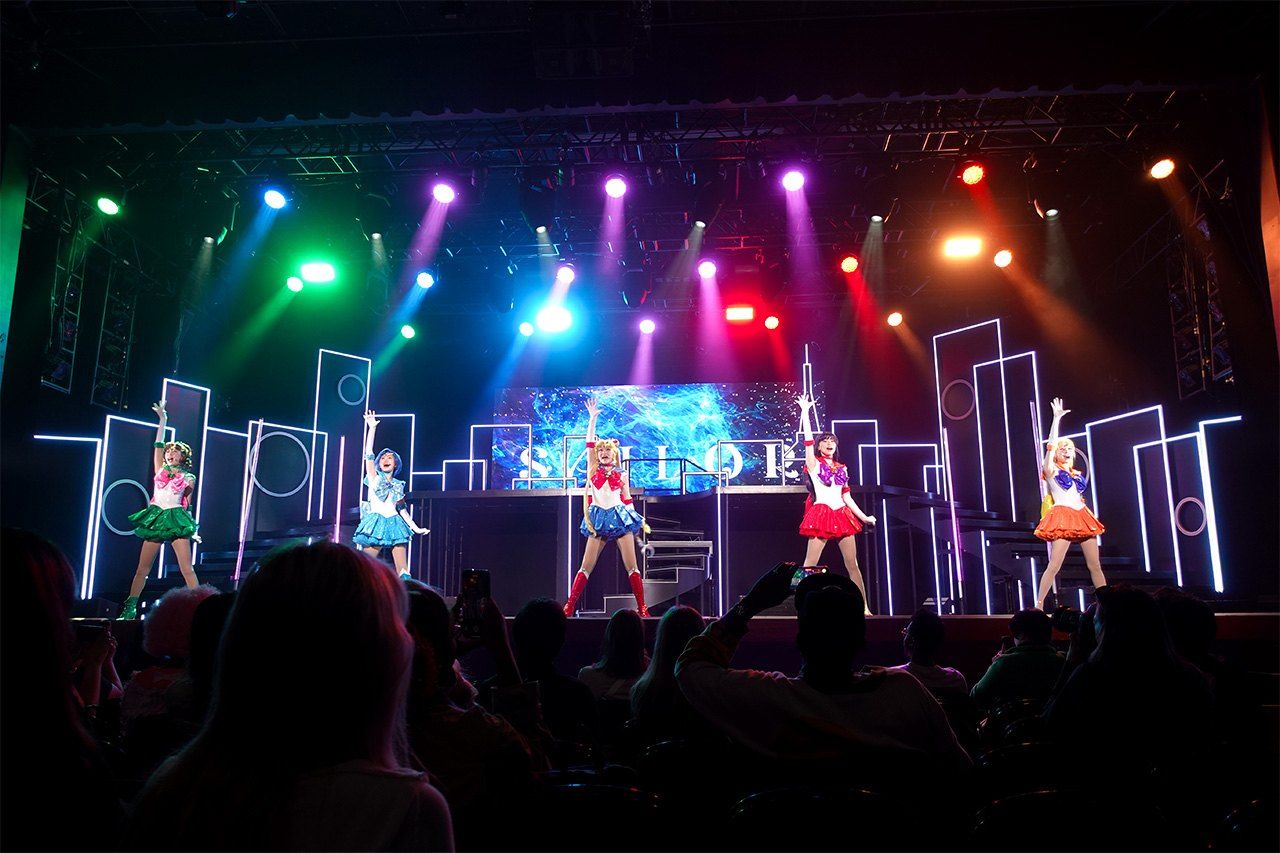
A Pretty Guardian Sailor Moon scene at a press event held in New York. (© Kasumi Abe)
The Japanese cultural boom doesn’t stop at the theater. March saw the grand opening of North America’s very first Uniqlo Coffee, located on Fifth Avenue, right in the heart of Manhattan.
Meanwhile, Times Square welcomed a new branch of Tamashii Nations, a specialty store selling collectible figures from hit anime such as Dragon Ball and One Piece. Though compact in size, the store is packed wall-to-wall with figures and related merchandise, drawing crowds of passionate otaku every day. While New York already has a few subculture-oriented shops, the significance of a figure store opening in the center of Times Square, a global tourist hotspot, can’t be overstated.
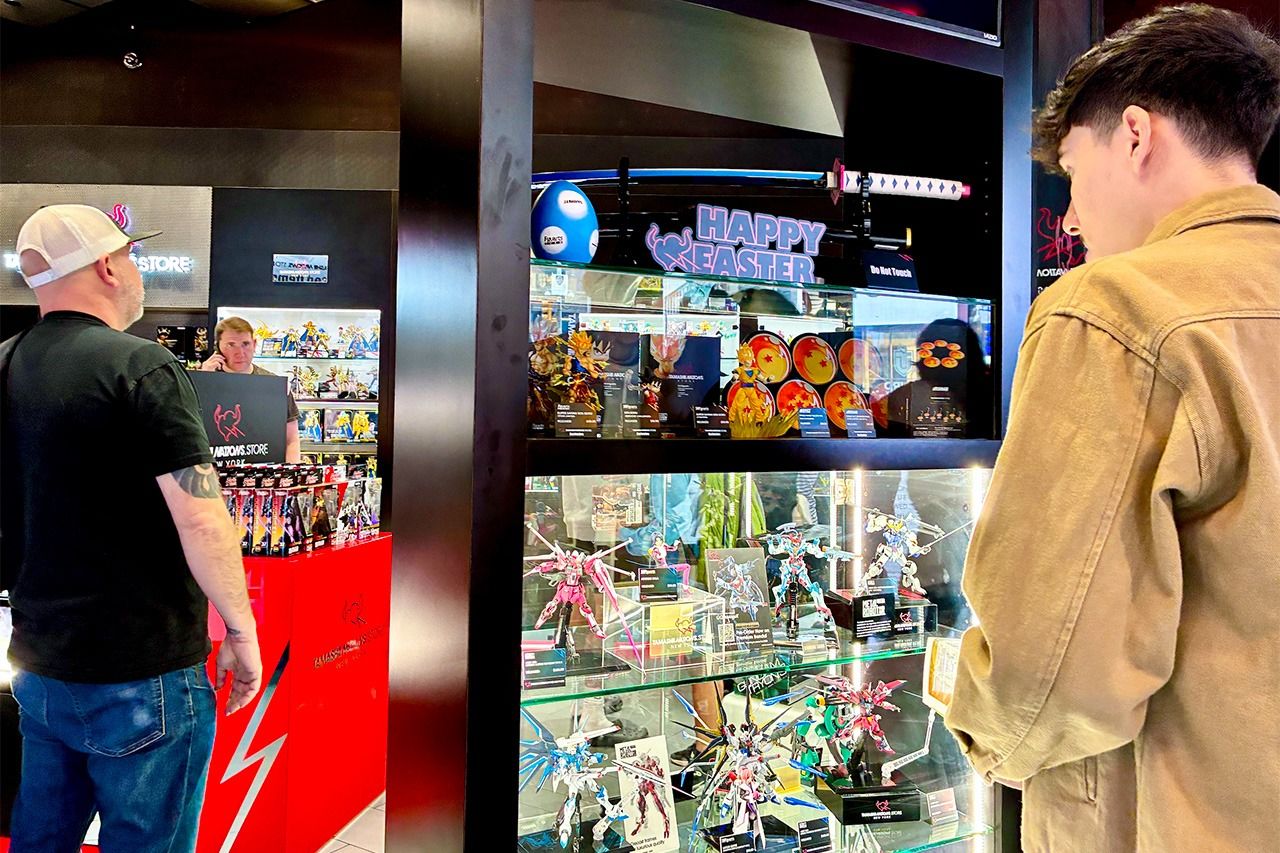
Tamashii Nations is packed with figures that captivate collectors. Its location attracts tourists from around the world. (© Kasumi Abe)
And the trend continues. In April, I’m Donut?—a sensation among Japanese donut chains—launched its first overseas location, further fueling the Japan craze. Nearby, a pop-up shop dedicated to the globally recognized Sanrio icon Hello Kitty is also slated to open soon.
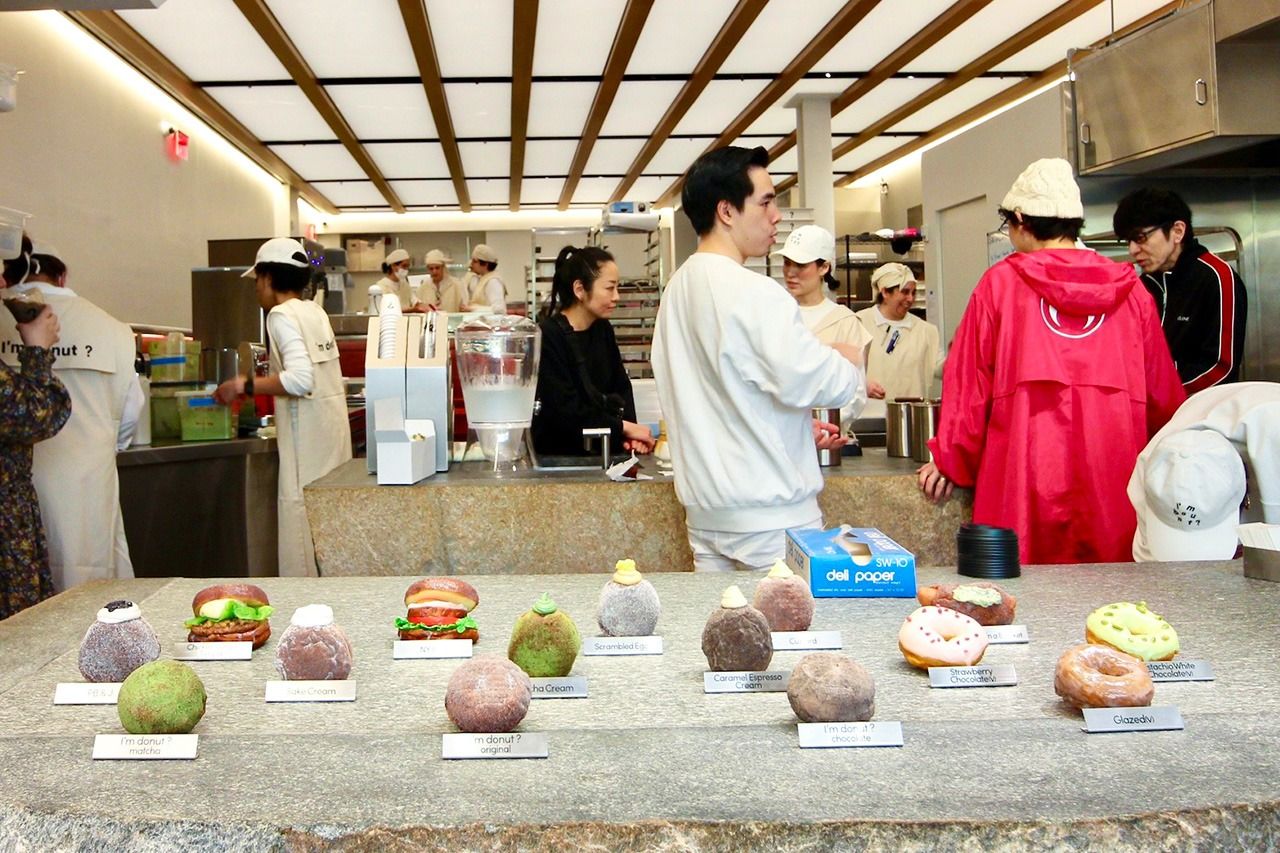
I’m Donut? in Times Square. (© Kasumi Abe)
Hunter College Students Explore Japanese-American History
One day in April, students at Hunter College, a constituent institution of the City University of New York, gathered for a special lecture by Takeshi Furumoto, a Japanese American veteran with a powerful personal history.
Born in 1944 inside a Japanese American internment camp in California, Furumoto later grew up in Hiroshima in the aftermath of the atomic bombing. Eventually, he served as an American soldier in the Vietnam War.
Drawing from these extraordinary life experiences, Furumoto shared his perspective on the complex history between Japan and the United States, as well as the importance of peace. His audience consisted of students studying Japanese language and culture at the college. With solemn, attentive expressions, they listened closely as he recounted the painful realities of a past that still resonates today.
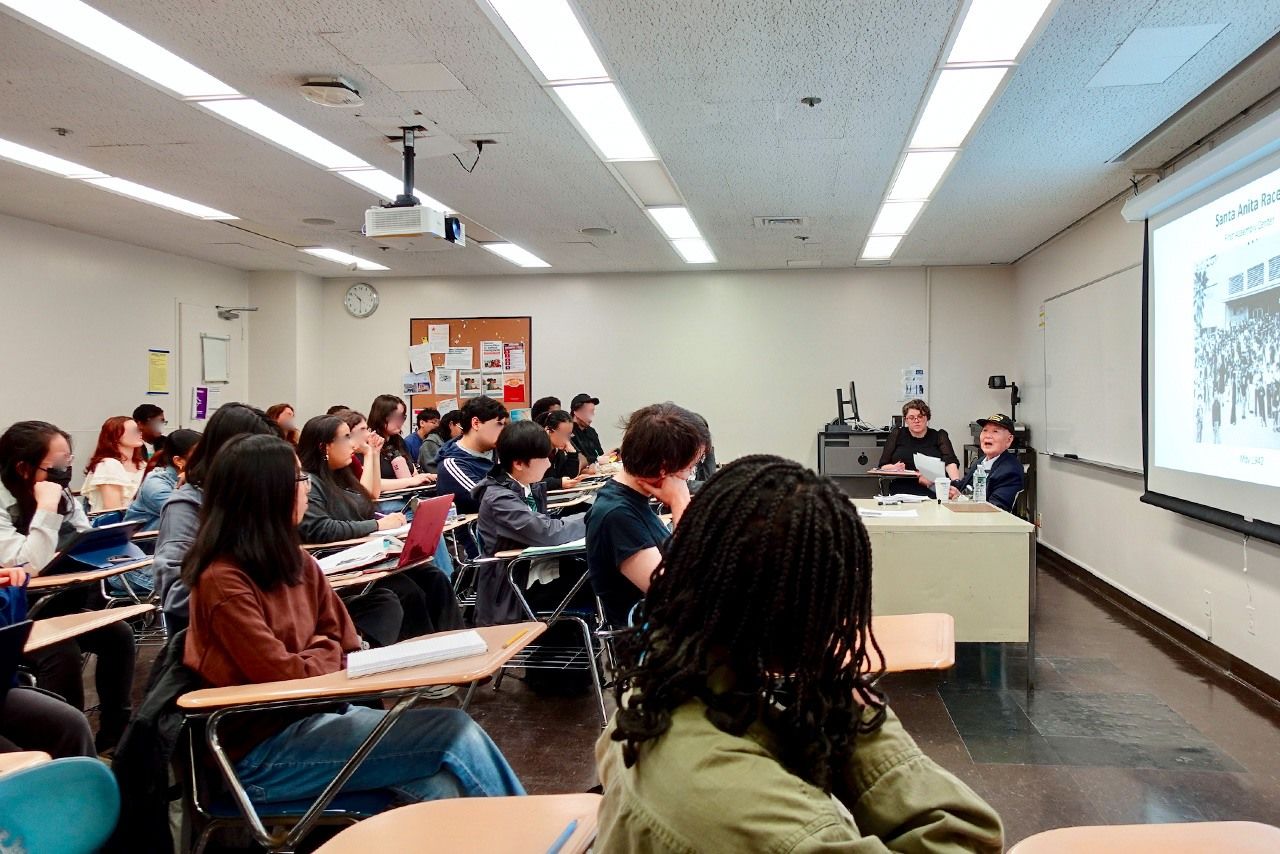
Hunter College students listen intently to Japanese American speaker Takeshi Furumoto. A stream of questions reflected their deep interest. (© Kasumi Abe)
According to Maayan Barkan, director of the Japanese Studies Program at Hunter College, over 1,300 students enrolled in Japan-related courses at the university last year alone. The curriculum is wide-ranging, with particularly strong interest in areas like Japanese cuisine, manga and anime, video games, and technology.
So what’s driving this surge in enthusiasm for Japan? Barkan explains that pop culture, especially manga, anime, and video games is often the spark, noting that many students watch Japanese dramas and find themselves wanting to learn the language or understand the historical context behind what they see.
Even a casual encounter with a manga can be surprisingly influential. For instance, a student might see a scene involving flower arranging and suddenly become curious about ikebana, the traditional art of floral design. Pop culture serves as an accessible entry point, and for some, that initial curiosity gradually deepens into an appreciation for Japan’s more traditional cultural elements. And in a city like New York, where Japanese restaurants and specialty grocery stores are scattered throughout the boroughs, that cultural exposure often turns into genuine fascination.
April Goehrke, an adjunct lecturer who teaches Japanese culture and subculture at Hunter, agrees that for many students, the journey begins with anime during childhood. They might start out watching something without even knowing it’s from Japan, she explains. But once they find out, it opens the door to broader interests—Japanese language, customs, and even the country’s history.
Entertainers’ Perspectives on Sharing Japanese Culture
How do Japanese performers themselves perceive their culture when they bring it overseas? After making their debut appearance at the Japan Parade, Yamamoto Sayaka and members of the stage adaptation of Attack on Titan reflected on what they observed and hoped for Japan’s cultural future abroad.
NMB48 alumna Yamamoto Sayaka argues that Japan’s unique cultural assets—like anime and cuisine—are real strengths. “So many people came up to say they genuinely love them,” she recalls. In Japan, she notes, being an otaku still carries a bit of a negative image, but overseas it’s embraced in a largely positive way. People proudly say “I’m an otaku”—a form of confidence she feels the Japanese themselves could learn from. “I really hope Japanese culture continues to spread in a positive way.”
Tatemichi Riona, who plays Hange Zoë in the Titan stage adaptation, agrees that anime and manga are incredibly powerful cultural forces. “I hope that momentum just keeps growing without limits and spreads even further across the world. I’m a huge anime fan myself!”
Matsuda Ryō, who plays Levi, says, “We were born and raised in Japan, and I truly believe we have a culture we can be proud of.” He wants the world to get to know and appreciate these things—and, he adds, “if we can bring a smile to someone’s face through that, even better.”
And Ōno Takurō, who plays Erwin Smith, argues that Japan’s most celebrated anime and manga often carry with them the beauty of tradition and spiritual depth, giving them passion and storytelling power that truly resonates worldwide. “Attack on Titan: The Musical takes those elements and transforms them into a living, breathing form of art,” he says. “The dancing, kendō, martial arts, these all blend visual and auditory beauty with deeper spiritual meaning. I hope that through these performances, more people can sense what makes Japanese culture special and come to love it even more.”
(Originally written in English based on a Japanese text provided by Kasumi Abe. Banner photo: The Japanese Hill-and-Pond Garden in the Brooklyn Botanic Garden, taken during the Hanami Nights event held in the spring. © Kasumi Abe.)
